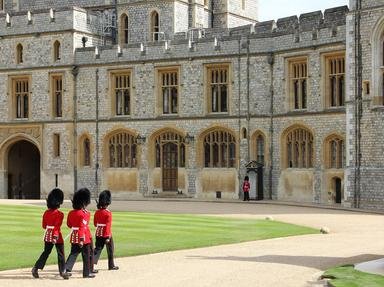Quiz Answer Key and Fun Facts
1. Which of these was not a Stuart monarch in England?
2. When did the first Stuart king assume the throne of England?
3. Which American colonial outpost was named after the first Stuart monarch?
4. This man is the one whom historians consider to have been the last British monarch to exercise "absolute rule": __________
5. This Scottish man, though massively outnumbered, trounced the anti-Royalist Scots with his motley collection of Highlanders and Irishmen until finally defeated and killed:
6. This man was the leader of the most extreme anti-Royalists in Parliament before his death early in the Civil War:
7. This dashing German cavalryman was the right-arm of the King during the Civil War:
8. This, the last great battle of the Civil War, is said to have cost the King his head:
9. In the aftermath of this battle, the Stuart claimant to the throne was forced to take refuge in a tree (hence the popularity of the pub name Royal Oak). Which battle?
10. Two disasters hit London during Charles II's reign: _________ and ________ .
11. In the year after the Great Fire, England was threatened by which European Power?
12. This man, who had preserved the reigning Stuart's throne by defeating a rebel army at Sedgemoor, later sealed the monarch's fate by defecting (along with his officers) to a foreign invasion force. What was his family name, his surname?
13. This political faction supported the claim of William of Orange and his wife, Mary Stuart:
14. The Stuarts were the last ethnically British Royal House.
15. What famous treaty was signed during Queen Anne's reign?
Source: Author
brutus_cassius
This quiz was reviewed by FunTrivia editor
thejazzkickazz before going online.
Any errors found in FunTrivia content are routinely corrected through our feedback system.


